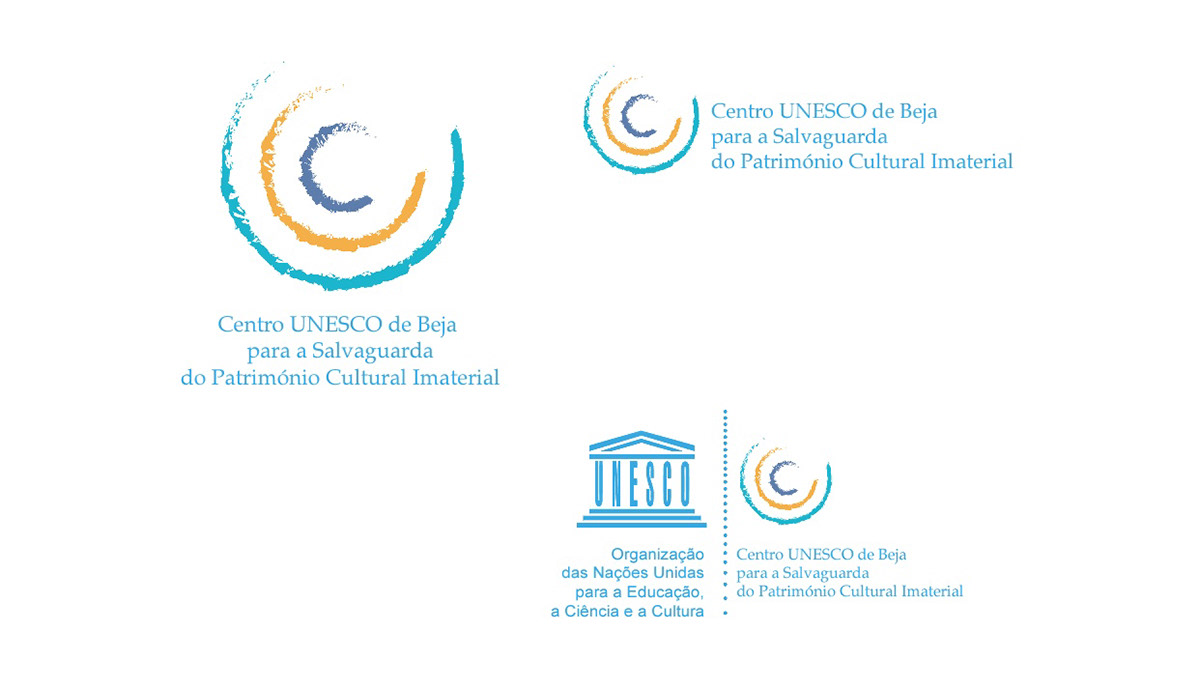UNESCO Intangible Cultural Heritage logo
Logo Design
2016
BRIEF
The UNESCO centre for Intangible Cultural Heritage in Beja (Portugal) needed a logo and I was asked to help.
How to represent Intangible cultural heritage?
Wikipedia describes it as being "the practices, representations, expressions, knowledge, skills – as well as the instruments, objects, artifacts and cultural spaces associated therewith – that communities, groups and, in some cases, individuals recognize as part of their cultural heritage"
VISUAL RESEARCH


PROPOSALS
Beja is in Alentejo, a region south of the capital, Lisbon, known for its warm dry weather and vast landscapes.
How to represent Intangible cultural heritage?
intangible |ɪnˈtan(d)ʒɪb(ə)l| [Thesaurus]
unable to be touched; not having physical presence
• difficult or impossible to define or understand; vague and abstract
1st Proposal
Portugal has a long tradition of tiles and specially in the inner regions of the country they’re are widely used in people’s houses, churches, public buildings. It’s more than just decoration, it’s part of our cultural heritage!
That’s where the logo started, as a simplistic graphic interpretation of a Tile, with a geometric pattern and the 3 most common colours found in tiles and in Alentejo: indigo blue, cyan blue and egg yellow.

1st Proposal - a simplistic graphic interpretation of a Tile
2nd Proposal
The first proposal was rejected as the solution should be more abstract, so it was back to the drawing board.
As our cultural heritage can take many forms and shapes, from dance to music to ceramics, there is but One common denominator: us, Human.
Therefore, inspired by the human touch and what it can create and leave behind for generations to come, I designed a spiral in the abstract shape of a Fingerprint.

2nd Proposal - intangible cultural heritage represented by a spiral in the shape of a Fingerprint
3rd and Final Proposal
The second proposal followed the abstract criteria of "intangibility" but was monochromatic.
For this reason, this idea was rejected as the client had liked the subtle colour reference to Alentejo of the first proposal.
So, now, the challenge was to try to combine the winning arguments of the first two proposals: the colours of the first and the intangibility/abstraction of the second one.

The result!
LOGO IN USE





